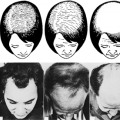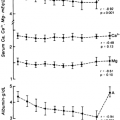GENOMIC LIBRARIES AND GENE ISOLATION
Southern Blots and Hybridization Screening.
The techniques used in the cloning of genomic DNA are similar to those used for cloning cDNA, except that the genomic sequences are longer than the cDNA sequences and different cloning vectors are required. The common vectors are derivatives of the bacteriophage λ that can accommodate DNA fragments of 10 to 20 kilobases (kb). Certain hybrids of bacteriophages and plasmids, called cosmids, can accommodate inserts of DNA of up to 40 to 50 kb. Even larger segments of DNA up to 1 to 2 megabases (Mb) can be cloned and propagated in yeast and are called yeast artificial chromosomes (YACs). In the cloning of genomic DNA, restriction fragments are prepared by partial digestion of unsheared DNA with a restriction endonuclease that cleaves the DNA into many fragments. DNA fragments of proper size are prepared by fractionation on agarose gels and are ligated to the bacteriophage DNA. The fragments of DNA containing the desired sequences can be detected by hybridization of a membrane blot prepared from the gel with a 32P-labeled cDNA, a Southern blot. The recombinant DNA is mixed with bacteriophage proteins, which results in the production of viable phage particles. The recombinant bacteriophages are grown on agar plates covered with growing bacteria. Then the bacteria are infected by a phage particle, which lyses the bacteria to form visible plaques. Specific phage colonies are transferred by nitrocellulose filters and are hybridized by cDNA probes labeled with 32P, similar to a Southern blot. Libraries of genomic DNA fragments and tissue-specific cDNAs from various animal species cloned in plasmids and bacteriophages are available from a number of commercial laboratories. The development of yeast chromosomal libraries that harbor large segments (several megabases) of chromosomal DNA has markedly accelerated the generation of gene linkage maps.
Stay updated, free articles. Join our Telegram channel

Full access? Get Clinical Tree





